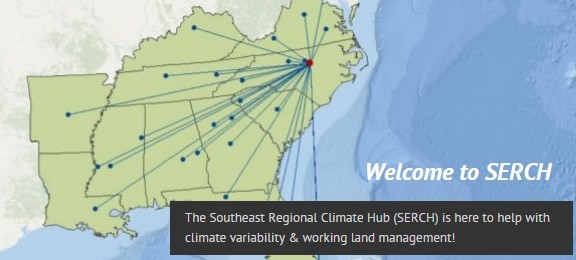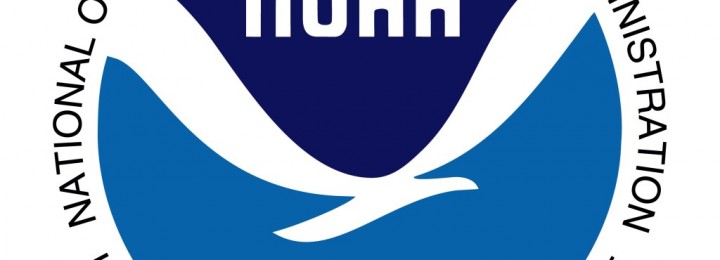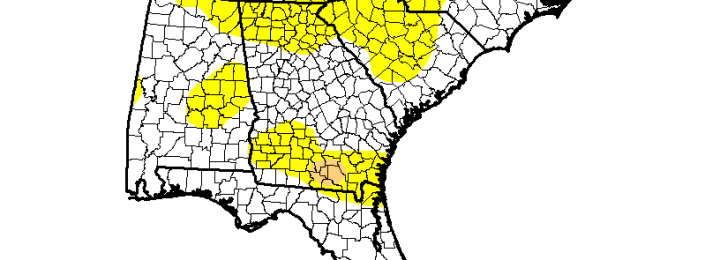Sources of weather and climate data
-

The National Drought Monitor collects and disseminates drought information for the United States each Thursday morning after seeking input from climatologists and other stakeholders around the country. One of the products they provide is a map of changes in drought status for the US. The map below shows the change in drought status for the…
-

In this series of postings I have introduced you to a number of people and groups working on providing climate data and information to Extension agents, agricultural producers and others who need access to trustworthy weather and climate information. Today I am pleased to profile the USDA’s Southeast Regional Climate Hub, located in Raleigh, NC. …
Posted in: Sources of weather and climate data -

For meteorologists, June 1 through August 31 is considered summer. NOAA’s Climate Prediction Center released an updated outlook for June that shows a continuing increased chance of wetter than normal conditions for the month. Temperatures are expected to be above normal for the first half of the month but the average for the entire 30…
-

Last week I talked about mesonets in general and listed several around the Southeast. Today I am going to focus on the Georgia Automated Environmental Monitoring Network (GAEMN). You can find them at https://www.georgiaweather.net. This is a network of 81 automated stations around Georgia run by the University of Georgia which collect weather data at…
-

The National Centers for Environmental Information (formerly known as the National Climate Data Center) announced a new blog this week which will feature in-depth discussions of current and past climate. They will look at trends in climate over time, compare current to past events, and more generally discuss how climate data are collected and used…
-

The latest National Drought Monitor was issued this morning and shows that abnormally dry conditions expanded from 20 to 34 percent of the region, mostly in the western Carolinas and Virginia. Dry conditions decreased in Alabama, but moderate drought reappeared in south-central Georgia, which has missed most of the rain this past month. Updated drought…
-

In addition to the network of weather stations run and maintained by the National Weather Service, there are a number of other public and private weather networks that collect weather and climate information. These networks are called “mesonetworks” or “mesonets” because they cover a smaller region that then NWS network. They also use different instrumentation…
Posted in: Sources of weather and climate data